Reflecting on Teaching & Learning: Modeling Transcript
GFX:
Tch
Teaching Channel
+++ 00:00:04 +++
Chris: I used the first video of just you and me throwing the ball back and forth.
Jon Southam: Right.
Krista McAtee: It was interesting to me, because we started with, "Oh, it's gonna be a parabola," and then nobody did that.
Krista McAtee: We felt like it was a really powerful experience. We felt like we could-- we learned from each other, just like we're asking our students to learn from each other.
Card:
Illustrative Mathematics:
Reflecting on Teaching & Learning
Modeling Real World Functions
+++ 00:00:30 +++
Chris: John, how do you feel that your lesson went, now that you're reflecting upon it.
Jon Southam: It went well. There were definitely things that I would change, but the kids got what I wanted them to get.
Lower Third:
Krista McAtee
High School Math Teacher
Sonoma Valley High School, Sonoma, CA
Krista McAtee: Today, I sat with John and Chris, who are two other math teachers in our department at Sonoma Valley. And we brought the work that we did in our classrooms.
Krista McAtee: I'm going to give you a second to go ahead and graph. And remember this is a sketch.
Card:
Krisa McAtee's Bridge to Geometry Class
Sonoma Valley High School, Sonoma, CA
+++ 00:00:56 +++
Student: It doesn't go higher each time.
Student: It goes like this.
Student: It goes up. Take three seconds to go to the other graph, and then three seconds. And then three seconds. And then after, it goes way down.
Krista McAtee: We were focusing on having students understand, look at a mathematical situation, and being able to graph that situation.
Chris: Algebra I they did-- "Oh, it's gonna go, and then back. And then like this." And these had a bunch of those on their paper.
Jon Southam: Yeah.
+++ 00:01:26 +++
Chris: Which was nice, because then we got to talk about why that doesn't work, and why time can't go backward and forward.
Jon Southam: Chris is on Freshman Team, so he teaches Freshman Algebra and Freshman Geometry. And then Krista teaches our Bridge to Geometry Course.
Lower Third:
Jon Southam
High School Math Teacher
Sonoma Valley High School, Sonoma, CA
Jon Southam: And I'm in the Algebra II class, so it was nice to have three-- the same task at three different class settings.
Chris: So they got that the ball was, you know, going from our hands, up in the air, back to one of us, and then back and forth. So they got that part. They just needed to kind of put it in sequence instead of the--
Jon Southam: The bridge.
Chris: Yeah.
+++ 00:02:00 +++
Jon Southam: We did see things that we had in common. A lot of the peaks and valleys that should have been there were there, the same features of the graphs, which is what we wanted. But it was nice to see that the differences in some of our classes, so for example, some of Krista's students did a lot of these up-down, up-down, straight lines. In my class, I was seeing a lot more wavy graphs of the ball going back and forth.
Jon Southam: I had one student do the throws with a little dip. Went up, and then we caught it, and then it goes back down. He accounted for the--
+++ 00:02:27 +++
Chris: That's cool.
Jon Southam: So he accounted for it a little bit.
Krista McAtee: That's nice. A lift.
Jon Southam: Like the down--
Krista McAtee: And then up.
Jon Southam: And then up. Down, and then throw.
Krista McAtee: Both of their classes started from a different place than mine did.
Card:
Chris and Jon's Student Work
+++ 00:02:49 +++
Krista McAtee: Their classes already started with an obvious, you know, obvious curves and they were more accurate to begin with. It helped me go, "Oh, you know, that's-- these are gaps that my students have, and these are things that I--
Card:
Krista's Student Work
Krista McAtee: "You know, where I want them to be able to go in their understanding."
Krista McAtee: I've got all of these peaks. Like this. So very few kids did the-- like the lobby thing, although right in the beginning, one of the kids said, "Oh, it's gonna be a parabola, it's gonna be like a parabola!"
Jon Southam: Yeah.
+++ 00:03:23 +++
Krista McAtee: But then even that student didn't draw curves, he drew peaks. And we had a good discussion in this one, I think it was this one. Afterwards he said, "Oh, this should have gone down to the ground here, and here, because, you know, this is, you know, this was like waist height, or however high you were holding the ball, and then this went all the way down to the ground. So that's what I would have done." You know, so it was nice that he recognized that after-- or they recognized that.
Jon Southam: Mm hm.
+++ 00:03:47 +++
Chris: I noticed that they were really good about fixing what was inaccurate or imprecise. This girl did, and she was kind enough to label all of her graphs, so she labeled the first one as a "Fail," second one was a "Partial Fail," and then the third one was a "Win."
Jon Southam: A "Win." Nice.
Chris: But yeah, she had the-- this thing. And we talked there about, you know, "Is it really here the whole time? Or does it kind of come down a bit and then come back up?"
Jon Southam: Yeah.
Krista McAtee: Oh, yeah.
Chris: And we decided that we don't need to be that precise, where this is good.
Jon Southam: Yeah.
+++ 00:04:21 +++
Chris: But it led to a really cool discussion about, "Well, it depends what we're measuring height in."
Jon Southam: It helps us because we-- or I can take what they're doing and incorporate it into my own practice. I might see a questioning technique that Chris did that was-- I thought was really good. I might see some directions on the task that Krista gave really well. Because I noticed, for example, her graphs that her students produced were--
Card:
Krista's Student Work
+++ 00:04:46 +++
Jon Southam: Looked nicer than mine in the sense that they were drawn-- it was a bit more thought was put into them.
Jon Southam: Afterward, I felt we'd reached the--
Krista McAtee: Maximum--
Jon Southam: Maximum amount of learning that could happen from the height. I asked other things they think we could graph.
Card:
Jon Southams' Algebra II Math Class
Sonoma Valley High School, Sonoma, CA
Jon Southam: We're still going to compare whatever we choose to measure over time. So we're going to erase height. What else could be measured over time?
Student: Speed.
Jon Southam: So total-- so speed of the ball over time.
+++ 00:08:17 +++
Jon Southam: And I thought it'd be f-- it'd be a entertaining and worthwhile learning experience, but it was a bit harder than I'd anticipated.
Jon Southam: So where's the throw?
Student: That's when he first started. And then bounced, and it's like in the air, and then it goes over there.
Jon Southam: And then where does another--
Student: Soon as he catches it, it's going to go back down.
Jon Southam: Well, what was this?
Student: Like when he started throwing it.
+++ 00:05:42 +++
Jon Southam: So that was when he first threw the ball-- and this is when?
Student: It went--
Student: It's when he caught it.
Jon Southam: When he caught it.
Jon Southam: So as the collaboration session went on, we also looked at-- naturally so-- we just looked at, "Where can take this next?"
Krista McAtee: This'd be a great way to kind of start--
Jon Southam: Yeah.
+++ 00:05:56 +++
Krista McAtee: Tomorrow, and say, "Okay, here's some thoughts about, you know, that you guys had looking at this graph. What parts of it do you agree with? Or what makes sense to you? And you know, which stories could fit this? And how could we describe each of these pieces?"
Krista McAtee: We were able to really slow down and be reflective on what we were doing in a really deep, meaningful way, and it's powerful, because it informs our instruction.
Krista McAtee: What about if you were to do it again? Are there things that you can think of that you would do differently?
+++ 00:06:29 +++
Jon Southam: We could make a shorter video. Watching this one stretch with so many variations in it--
Krista McAtee: It was a lot to take-- to remember and to take in and to be accurate about.
Chris: Something I actually would have changed, I would have made them ask more mathematical questions.
Krista McAtee: Oh, right!
Chris: When I just show them the video, I'm like, "All right, what questions do you have?" "Is that you?" "What kind of glove is that?"
Krista McAtee: Yeah, when we're looking at, yeah.
Chris: "Okay, these are great questions, but let's get some math questions."
+++ 00:06:54 +++
Krista McAtee: Yeah, yeah, that's one of the switches that I made after you did your first iteration. I--
Krista McAtee: We have to be growing every day, every minute of our job. And if we're not really being collaborative and being reflective, then we're not able to grow in those ways.
Krista McAtee: Well, I enjoyed working with all of-- with you guys with this. I felt like it was powerful.
Jon Southam: Yeah.
Chris: Yeah!
Jon Southam: I think it's cool to see-- just the differences in where the class took it.
Chris: Yeah.
GFX:
Tch
Teaching Channel
#### End of C0804_001005_Sonoma_Collab_FINAL_SD.mp4 ####

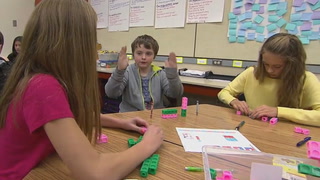
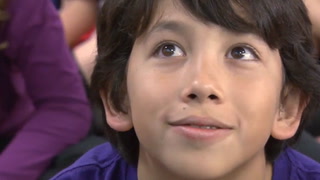
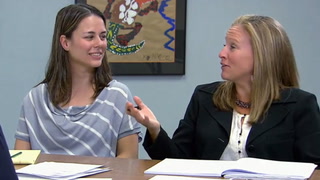


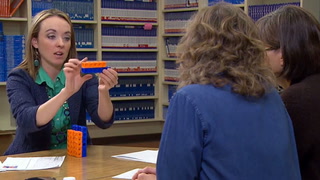
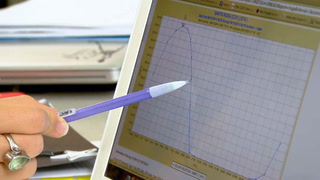
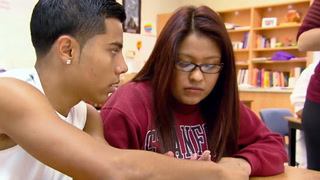
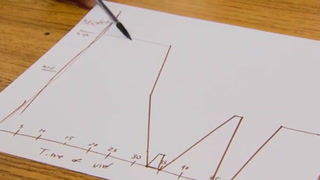
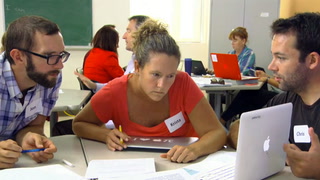








7 Comments
Emily McGee Apr 19, 2019 10:02pm
I think this example of collaboration is amazing. I am still pursuing my teaching degree, but seeing this collaboration and participating in this discussion definitely helps me grasp an idea of the importance of working with others to better the education for my students. I thought it was interesting that there were such obvious differences between the different classes. It was also really cool to see how these teachers were able to learn from one another and then change up their original plan to learn from the successes of their colleagues.
Patricia Brown Jan 15, 2018 11:02pm
Muhammad Zubair Jul 27, 2017 6:23am
Jean Ma Apr 28, 2016 7:23pm
michelle mcever Oct 15, 2015 1:31pm